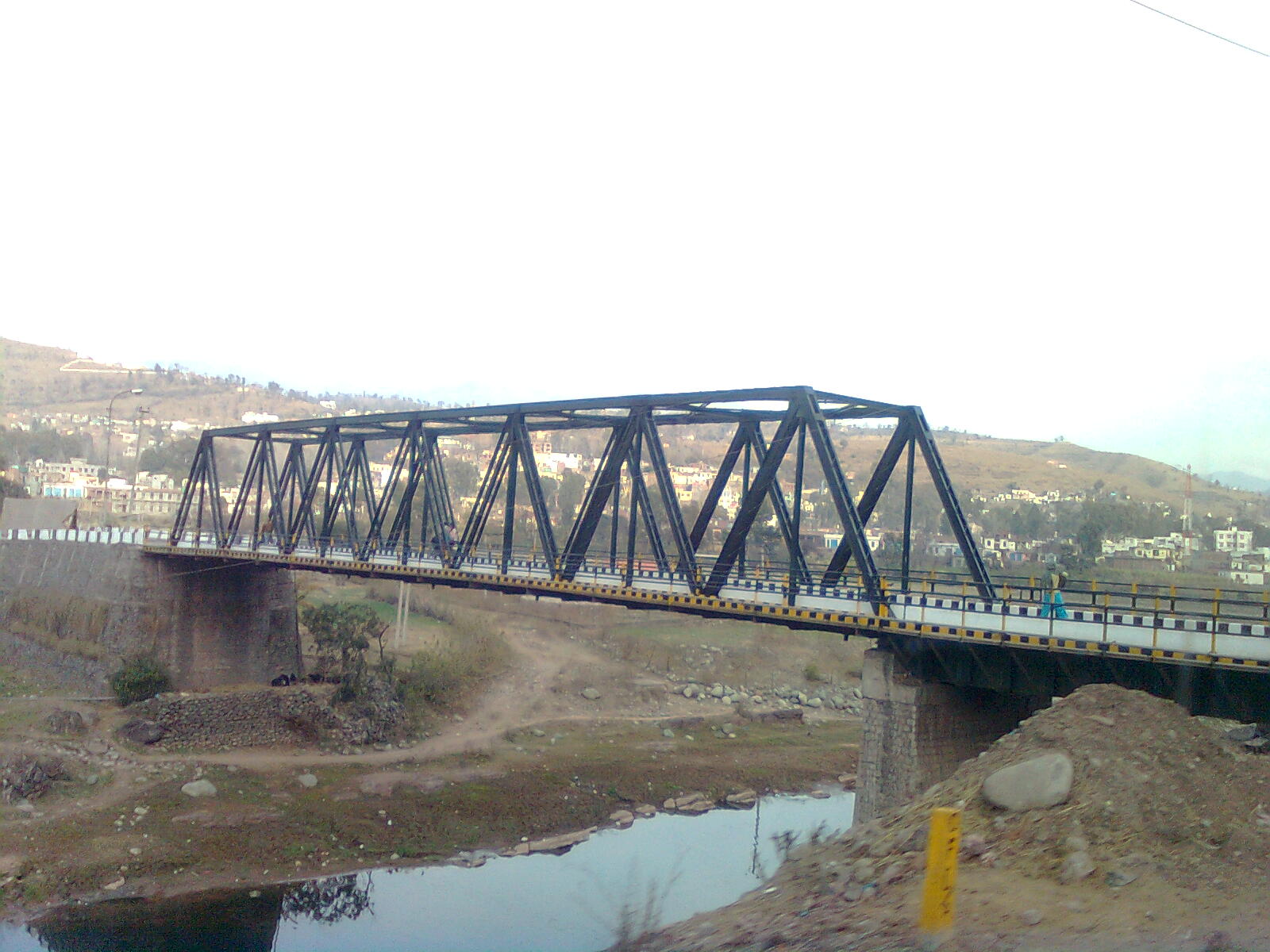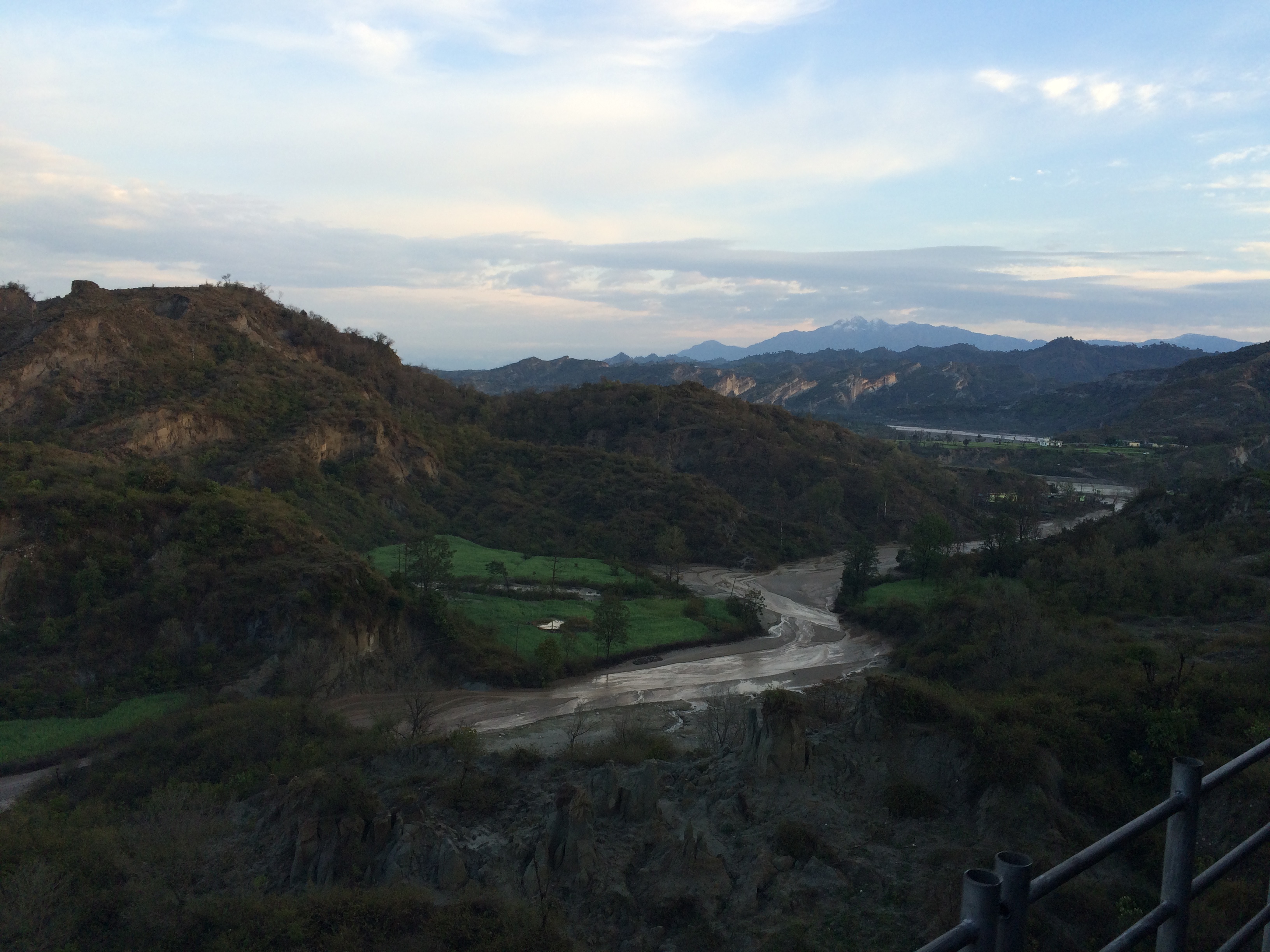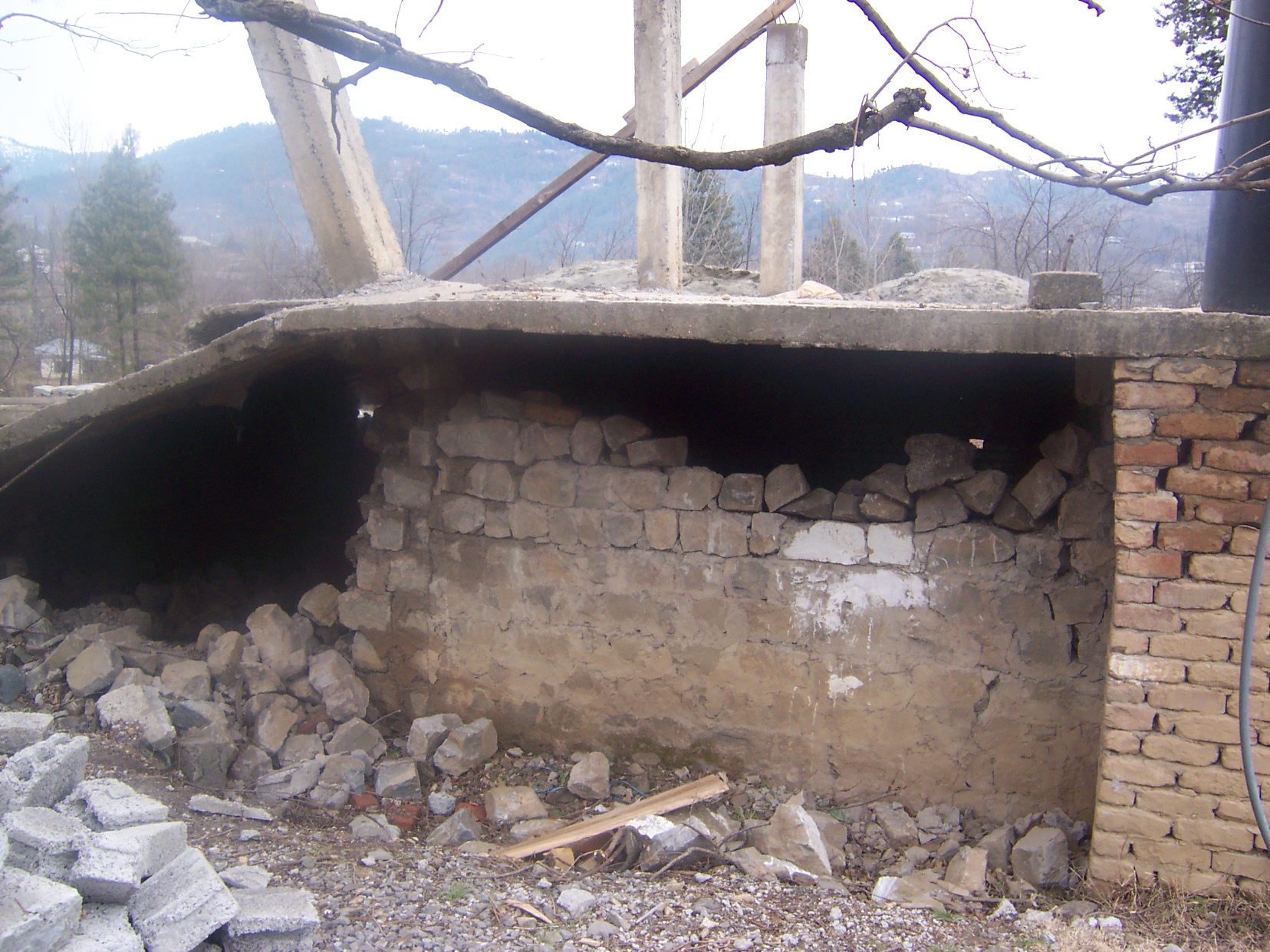|
Mohyal Brahmin
Mohyal Brahmins (or Potohari Brahmins) are an Indian sub-caste of Saraswat Brahmins from the Punjab region, who are sometimes referred to as 'Warrior Brahmins'. Mohyal Brahmins were the ancient and one of the first Hindu rulers of Punjab and Afghanistan. Their texts claim that their center of origin was from the Ghandhara region of Ancient India (now a region divided between northeastern-Afghanistan and northwestern-Pakistan). Prior to the Partition of India, Mohyal Brahmins lived primarily in the Potohar and Hazara regions of Northern Punjab (Rawalpindi, Chakwal, Jhelum, Sargodha, Campbellpur, Haripur, Abbottabad and Murree) and the Pahari regions of Jammu and Kashmir ( Pulandari, Mirpur, Kotli, Bhimber, Poonch, Rawlakote, Jammu, Bagh and Rajouri). After the partition, they migrated to, and settled in the neighbouring Indian states of Punjab, Jammu and Kashmir and Delhi. Mohyal Brahmins are a caste and a sub-group of the Punjabi Hindu community. The members of this su ... [...More Info...] [...Related Items...] OR: [Wikipedia] [Google] [Baidu] |
Saraswat Brahmins
The Saraswat Brahmins are Hindu Brahmins, who are spread over widely separated regions spanning from Kashmir in North India to Konkan in West India to Kanara (coastal region of Karnataka) and Kerala in South India. The word ''Saraswat'' is derived from the Rigvedic Sarasvati River. Most of Sarswat Brahmins are on Rajasthan north side, Haryana south side and most places on Punjab. Classification Saraswats Brahmins are classified under the Pancha Gauda Brahmin classification of the Brahmin community in India. In Western and South India, along with the Chitpavan, Karhades (including Padhyes, Bhatt Prabhus), and Konkani-speaking Saraswat Brahmins are referred to as Konkani Brahmins, which denotes those Brahmin sub-castes of the Konkan coast which have a regional significance in Maharashtra and Goa. Based on Veda and Vedanta In Western and South India, The Saraswat Brahmins are Rigvedi Brahmins and they follow Ashwalayana Sutra and are of Shakala Shaka Saraswat Brahmins are d ... [...More Info...] [...Related Items...] OR: [Wikipedia] [Google] [Baidu] |
Abbottabad
Abbottabad (; Urdu, Punjabi language(HINDKO dialect) آباد, translit=aibṭabād, ) is the capital city of Abbottabad District in the Hazara region of eastern Khyber Pakhtunkhwa, Pakistan. It is the 40th largest city in Pakistan and fourth largest in the province of Khyber Pakhtunkhwa by population. It is about north of Islamabad-Rawalpindi and east of Peshawar, at an elevation of . Kashmir lies a short distance to the east.People of Abbotabad speak HINDKO dialect of Following the Second Anglo-Sikh War, The British had annexed the entire Punjab region up to Peshawar. Abbottabad was founded in the early 1850s, by a British military officer in the Bengal Army of British Raj, James Abbott and replaced Haripur, as Hazara's capital. On the 9th of November 1901, the British established a North-West Frontier Province from the north-western districts of The Punjab, this meant that Abbottabad was now a part of the newly formed province. Following the Announcement of ... [...More Info...] [...Related Items...] OR: [Wikipedia] [Google] [Baidu] |
Indian States
India is a federal union comprising 28 states and 8 union territories, with a total of 36 entities. The states and union territories are further subdivided into districts and smaller administrative divisions. History Pre-independence The Indian subcontinent has been ruled by many different ethnic groups throughout its history, each instituting their own policies of administrative division in the region. The British Raj mostly retained the administrative structure of the preceding Mughal Empire. India was divided into provinces (also called Presidencies), directly governed by the British, and princely states, which were nominally controlled by a local prince or raja loyal to the British Empire, which held ''de facto'' sovereignty (suzerainty) over the princely states. 1947–1950 Between 1947 and 1950 the territories of the princely states were politically integrated into the Indian union. Most were merged into existing provinces; others were organised into ... [...More Info...] [...Related Items...] OR: [Wikipedia] [Google] [Baidu] |
Rajouri
Rajouri or Rajauri (; Pahari: 𑠤𑠬𑠑𑠶𑠤𑠮, راجوری; sa, राजपुर, ) is a city in Rajouri district in the union territory of Jammu and Kashmir, India. It is located about from Srinagar and from Jammu city on the Poonch Highway. The city is the location of the birthplace of Sikh Rajput General Banda Singh Bahadur. Baba Ghulam Shah Badshah University is also situated in this district. History Ancient History Rajouri was Ruled by Many Rulers Palas, Jaral Rajputs For 12th - 19th Century & Dogra Rajput Dynasty. Rajouri, finds its mention in the travelogue of Chinese traveler Hiuen-Tsang who visited the town in 632 A.D. and described it as a part of Kashmiri dominion. Later was included in the domain called Darabhisanga which comprised the hilly stretch from Poonch to Kashmir. Those days Laharkote in Poonch district and Rajouri had emerged as two powerful states of the area. According to F.E.Pargitor, second branch of Aryan emigrants cross ... [...More Info...] [...Related Items...] OR: [Wikipedia] [Google] [Baidu] |
Bagh, Azad Kashmir
Bagh City ( ur, ) is the chief town and district headquarters of Bagh District, in Azad Kashmir, Pakistan. The town is situated on the confluence of two nullahs (streams), Malwani and Mahl (ماہلوانی اور ماہل) at the distance of 93 km from Muzaffarabad. 2005 earthquake On 8 October 2005, Bagh was hit by a devastating earthquake that killed 8,500 people, which represented 10% of the population. Most of the victims were children attending school who died when the school buildings collapsed. The worst hit institutes were a school named Spring Field Children academy ( where 300 plus children died in junior campus),the boys' degree college and girls' degree college Bagh. Many lives could have been saved if the rescue equipment was available. The entire city was destroyed and is rebuilt with the help of government. Geography Bagh is located 80 kilometres from Muzaffarabad, the capital city of Azad Kashmir. It is 160 kilometres from Islamabad Islamabad (; ... [...More Info...] [...Related Items...] OR: [Wikipedia] [Google] [Baidu] |
Jammu
Jammu is the winter capital of the Indian union territory of Jammu and Kashmir. It is the headquarters and the largest city in Jammu district of the union territory. Lying on the banks of the river Tawi, the city of Jammu, with an area of , is surrounded by the Himalayas in the north and the northern-plains in the south. Jammu is the second most populous city of the union territory. Three battles have been fought in the city: first by the founder Raja Mal Dev against Timur in Battle of Jammu (1399), second by Sardar Bhag Singh against Mughal army in Battle of Jammu (1712) and the third by Mian Dido & Maharaja Gulab Singh against Ranjit Singh's army in Battle of Jammu (1808). Known as the ''City of Temples'' for its ancient temples and Hindu shrines, Jammu is the most visited place in the union territory. Jammu city shares its borders with the neighbouring Samba district. Etymology According to local tradition, Jammu is named after its founder, Raja Jambulochan, who ... [...More Info...] [...Related Items...] OR: [Wikipedia] [Google] [Baidu] |
Rawalakot
Rawalakot ( ur, ) is the capital of Poonch district in Azad Kashmir, Pakistan. It is located in the Pir Panjal Range. History Along with Pallandri, Rawalakot was the focal point of the 1955 Poonch uprising. It was led by the local Sudhans who disapproved of Sher Ahmed Khan and wanted Sardar Ibrahim Khan, as well as democratic reforms. 2005 Kashmir earthquake On Saturday, 8 October 2005 a 7.6 magnitude earthquake killed 73,338 people and left up to three million homeless in Pakistan, including Azad Kashmir. The city of Rawalakot, the capital of the Poonch, suffered significant damage from the 2005 Kashmir earthquake; although most of the buildings were left standing, many of them were rendered uninhabitable, and some of the population was left homeless. Most of the buildings have been reconstructed. Location Rawalakot is located at Latitude 33°51'32.18"N, Longitude 73° 45'34.93"E and an Elevation of 5374 feet. Rawalakot is approximately from Kahuta and about fro ... [...More Info...] [...Related Items...] OR: [Wikipedia] [Google] [Baidu] |
Poonch (town)
Poonch (or Punch), (called ''Prunts'' in the Kashmiri, Gojri & Pahari languages) is a town and the administrative headquarters of the Poonch district, in the Jammu division of Jammu and Kashmir, India. It is located near the Line of Control – the ''de facto'' border with Pakistan administered Jammu and Kashmir. History Based on the Mahābhārata evidence, and the evidence from the 7th-century Chinese traveller Xuanzang, the districts of Poonch along with Rajauri and Abhisara were under the sway of the Republican Kambojas during epic times. Poonch has witnessed many historical eras. Around 326 BC when Alexander the Great invaded the lower Jhelum belt to fight with Porus, this region was known as Dravabhisar. In the 6th Century AD, the famous Chinese traveller Huien Tsang passed through this area. According to his observation, this region was known as part of Kashmir also known as mini Kashmir. Around 850 AD Poonch became a sovereign state ruled by Raja Nar, who w ... [...More Info...] [...Related Items...] OR: [Wikipedia] [Google] [Baidu] |
Bhimber
Bhimber ( ur, ) is the capital of Bhimber District, in the Azad Kashmir. The town is on the border between Jammu region and Punjab in Pakistan proper about by road southeast of Mirpur. History Bhimber was the capital of the Chibhal dynasty, which lasted from 1400 to 1856. Bhimber lies on the route that was followed by the Mughal Emperors for their frequent visits to the Kashmir Valley. It is also known as "Baab-e-Kashmir" (Door to Kashmir) because of its importance and geographical location, which was ideal for the Mughal Emperors to use to enter Kashmir. Therefore, the Mughals used Bhimber as a staging point for their journey to Srinagar. The Mughal Emperor Jahangir discussed Bhimber in his book '' Tuzk-e-Jahangiri''. Modern history In the 19th century, Chibhal came under the Maharaja Gulab Singh. Around 1822, along with Poonch, it was granted as a jagir (feudal land grant) to Raja Dhian Singh of the Dogra dynasty, Gulab Singh's brother. After the death of Maharaja Ran ... [...More Info...] [...Related Items...] OR: [Wikipedia] [Google] [Baidu] |
Kotli
Kotli ( ur}) is a city in Kotli District of Azad Kashmir in Pakistan. It lies on the Poonch River, and the river contains several notable waterfalls including the Lala Waterfall near the town of Kotli and the Gulpur Waterfalls at the village of Gulpur to the southwest. As per 2017 Census of Pakistan, Kotli had a population of 46,907. History Origin The city of Kotli can be dated back to fifteenth century, when it was settled by a branch of the Royal Mangral family of Hindu Rajputs, Raja Mangar Pal. Back then it was known by the name of Kohtali meaning under mountain','' through the year the name morphed into Kotli. Kotli remained independent until subdued by Ranjit Singh in 1819. There is famous village Saidabad, Dhanna, and famous as mini Paris . Famous Things About Kotli Kotli city is very popular because of mosques. There are mosques on all entrances and exits of the city. According to an estimate, there are more than three hundred mosques in the city, due to which ... [...More Info...] [...Related Items...] OR: [Wikipedia] [Google] [Baidu] |
Mirpur, Azad Kashmir
Mirpur ( phr, , translit=mirpur; ur, , translit=mīrpūr), officially known as New Mirpur City ( ur, , translit=shèhar nayā mīrpur), is the capital of Mirpur district located in Azad Kashmir, Pakistan. It is the second largest city of Azad Kashmir and 74th largest city in Pakistan. A significant portion of the population from the district, the Mirpuri diaspora, migrated to the United Kingdom in the mid-to-late 1950s and in the early 1960s, mostly to West Yorkshire, East and West Midlands, Birmingham, Luton, Peterborough, Derby and East London. Mirpur is thus sometimes known as "Little England". Many British products are found, and many shops in the city accept the pound sterling. The city itself has gone through a process of modernization, but most of the surrounding area relies on agriculture. History The city of Mirpur itself was founded in around 1640 AD or 1050AH by the Ghakhar chief Miran Shah Ghazi. The Imperial Gazetteer of India Provincial Series Kashmir a ... [...More Info...] [...Related Items...] OR: [Wikipedia] [Google] [Baidu] |
Pallandri Tehsil
Pallandri, also spelled Palandri ( ur, ), originally Pulandari, is a Tehsil which serves as administrative capital of Sudhanoti district of Azad Kashmir. It is located at latitude 33° 42′ 54″ N, longitude 73° 41′ 9″ E, from Islamabad, the capital of Pakistan. It is connected with Rawalpindi and Islamabad through Azad Pattan road. The main tribe of Pallandri is the Sudhan tribe. History Pallandri was central for the violent anti government 1955 Poonch uprising, which was led by the Sudhans. Sudhans were angered by the removal of Sardar Ibrahim Khan, with an assassination attempt on Sher Ahmed Khan marking the beginning in February 1955. Administration Pallandri is divided into four tehsils, Pallandri, Mong, Tarar Khel and Balouch, and Pallandri serves as the headquarters of Sudhanoti. Jinjahell was the first capital of Azad Kashmir and is about 20 Kilometers away from Pallandri. It is at an elevation of 1372 meters and is from Rawalpindi via Azad Pattan. The dis ... [...More Info...] [...Related Items...] OR: [Wikipedia] [Google] [Baidu] |






